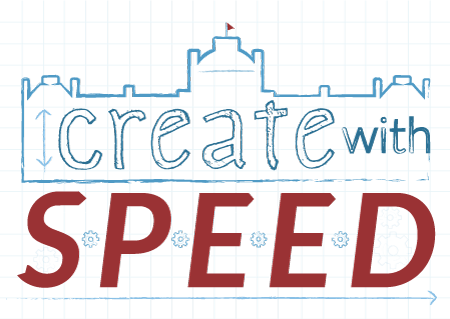Each year, ITS and the Libraries collaborate to work onSwarthmore Projects for Educational Exploration and Development (SPEED). This summer, we’ve focused on internal projects that will benefit the college. Staff members working with student interns have spent the last 5 weeks working on four projects. Our summer students have done a great job learning new technologies and designing engaging sites.
SPEED Interns for 2018
Richmond Mensah ’21
Guin Mesh ’19
Rebecca Regan ’19
Kyle Vu ’19
Tai Warner ’19
Projects
Real Time Lecture Transcription
The goal is this project is to improve the classroom experience for students with a hearing impairment. Audio from a classroom microphone is fed to a real time speech-to-text processor that returns a transcription of the lecture. Students can view the transcription on a web page on their computer or mobile device. The challenges with this project are selecting an accurate, fast speech to text service, restricting access to the transcription to students enrolled in the class, and developing a simple way to display the transcription online.
Civil Rights Oral Histories
In this project, the core strategy is to create a public website that will display Swarthmore College’s collection of alumni oral histories related to social activism. The aim is to make an accessible tool for interested alumni, current students, and faculty members at Swarthmore College, and we intend to maintain this site for those who may use it in the future. We envision this website serving a few different purposes. (1) Publication, in the old sense of making a work public. The website publishes the primary documents themselves by making them accessible. (2) Polyvocalism, in developing a tool to communicate historical narratives with the potential to reflect multiple lived experiences. (3) Narration. In arranging and framing the documents, as well as in designing the outward appearance of this site, we contribute to our project’s specific narrative. Since this is inevitable, we should design with intentionality and intersectionality while presenting our decisions transparently. With these features in mind, we hope to create a useful tool for the Swarthmore community. This website should serve as an informative resource, a research tool, and a way to draw similarities between past and present activism. Major challenges with this project include coming up with a clear, effective organizational structure, trying to maintain a balance between ambition and practicality when implementing our original mockup designs in code, and making sure that we communicate the content well with our design choices. All three of these took (and are taking) constant conversation because we need our design choices to be extremely deliberate with regards to the material.
Diversity in Library Collections
The Library Collections project aims to create interactive visualizations representing various metadata on the contents of the Trico libraries, allowing users to view and explore the entire collection through graphic representations. The project’s particular interest is in diversity within the collection – how works are distributed across topics of social significance. As the libraries’ corpus has expanded throughout its institutional history, what disparities have persisted or emerged in the academic attention and resources focused on different areas? In attempting to answer this question, Rebecca Regan ’19 and Richmond Mensah ’21 have become familiar with the D3.js Javascript library. Just as importantly, they have strived to develop an understanding of what the library metadata can tell us, and potential ways for this data to speak to its own summation, in a visually intelligible fashion.
Campus Resource Monitoring
Most of Swarthmore’s buildings are monitored with sophisticated building management systems that keep track of energy, water, and natural gas consumption. Many community members are interested in using data from these systems to analyze Swarthmore’s resource usage to see if we can reduce our CO2 emissions. The outcome of this project is a website that shows real time resource usage for buildings on campus as well as allowing users to download historical usage data for deeper analysis. The challenges are developing an easy to website that can interface with data from the building management system and developing a way to store and retrieve historical data.

